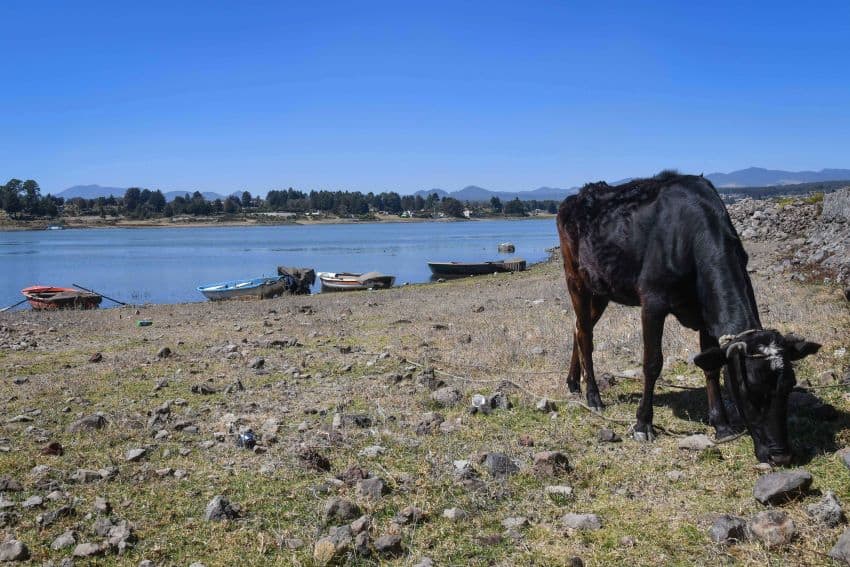Mexicans have been coping with drought conditions since the summer of 2023, set to become one of the most severe droughts to hit Mexico in over a decade, according to NASA’s Earth Observatory website.
Total precipitation from Jan. 1 through June 2 is 50.3% below the national average according to the National Water Commission (Conagua), about 6 centimeters instead of the usual 12 centimeters the country usually has received this time of year. Last month was also the second-driest May ever recorded — and the hottest, with temperatures 2.9 degrees C above average.
How much of Mexico is experiencing drought?
Nearly 76% of Mexico was experiencing drought conditions as of May 31, according to the Drought Monitoring Agency of the National Meteorological Service (SMN). Of even more concern, 58% of the country is experiencing severe to exceptional drought.
Less than 11% of Mexico is “unaffected” by the drought and only 43 of the country’s 2,471 municipalities are considered free from some degree of drought.
Where is there severe drought?
The states hit hardest by these searing conditions are in the central and northern regions of Mexico.
In Mexico’s midsection, more than 81% of Querétaro is reporting exceptional drought, the most severe classification. Sixty five percent of neighboring Hidalgo is in the same condition. The border states of Sinaloa (47%), Chihuahua (39%), Sonora (19%) and Tamaulipas (8.5%) are dealing with dangerous levels of aridity.

In the north central region, San Luis Potosí (46%), Durango (25%), and Guanajuato (19%) suffered from a lack of rainfall, while north and east of Mexico City, Veracruz (17%) and Puebla (9%) are also experiencing severe drought.
How many reservoirs are below 50% capacity?
Of the 213 most important reservoirs, only two are at full capacity, while 160 are below 50%. Just 126 were found to be below half capacity last year. Thirty-six reservoirs are 50 to 75% full and 15 are above 75% of capacity.
How many forest fires have there been in Mexico this year?
The heat and drought conditions have made for a high number of forest fires in Mexico this year. Through June 6, the National Forest Commission (Conafor) has reported 5,482 fires that have affected 538,233 hectares (1.3 million acres) of land. There were a total of 7,611 fires reported in all of 2023, and only 5,913 in 2020.
What are the forecasts for the rainy season?
This month has seen the beginning of seasonal rains which typically last through September and should provide some relief, although there is much ground to make up since last year’s 68% rainfall deficit.
The good news is that forecasts suggest the weather will turn to wet and cool in over half of the country in the second half of June. The NOAA announced the official end of the El Niño cycle on Thursday — which has been blamed for much of the recent extreme heat and drought in Mexico — and said there is a 65% likelihood that La Niña will develop from July-September (which is forecast to bring more rain).
A potent Central America gyre is currently forming and is expected to bring generous rainfall to southeast Mexico and to Gulf Coast states starting today through next week.
The gyre is expected to be more moderate from June 23-30, which could produce abundant rainfall across eastern Mexico through the end of the month. Unfortunately, northern and western Mexico are expecting little precipitation and high temperatures.
With reports from La Jornada and Meteored
